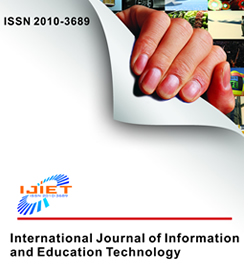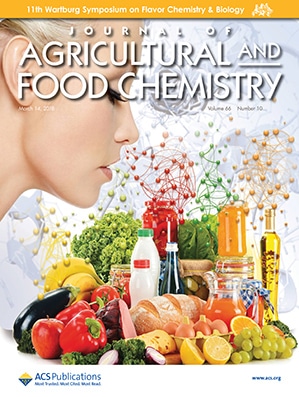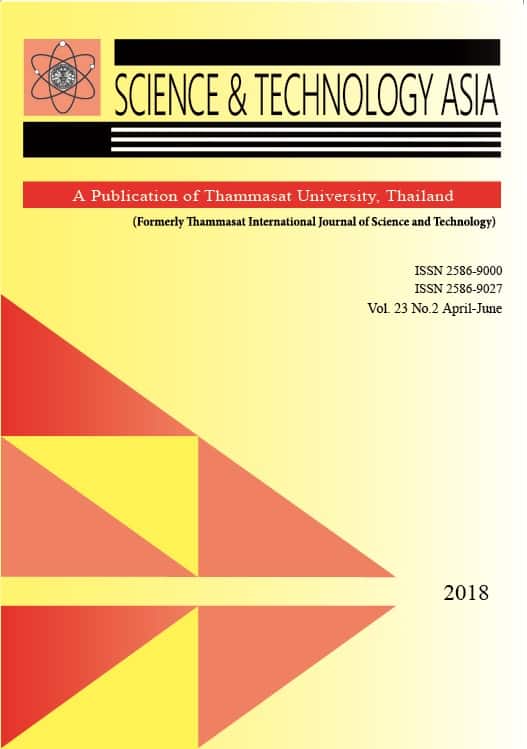
Applying a mixed method of quantitative and qualitative design in explaining the travel motivation of film tourists in visiting a film-shooting destination (2015)
Title : Applying a mixed method of quantitative and qualitative design in explaining the travel motivation of film tourists in visiting a film-shooting destination
Researcher : Bongkosh Rittichainuwat and Suphaporn Rattanaphinanchai
Department : Service Industry Management, Siam University, Bangkok, Thailand
E-mail : Bongkosh N. Rittichainuwat ngamson@gmail.com
Abstract : This study aims to: 1) describe the travel motivations of the types of film tourists proposed by Macionis (2004), specifically, serendipitous tourists, specific film tourists, and general film tourists, in visiting a film-induced tourist destination; and 2) empirically test the assumption that film tourism is incidental and neither the main nor the sole motivation of most tourists traveling to a film destination. A mixed method of quantitative and qualitative (a series of self-complete questionnaire surveys over a period of eleven months and a longitudinal study of interviews and participant observations over a period of four years) was used in the study. Out of 1852 samples, the numbers of specific film tourists (10.5%) and general film tourists (19.5%) are less than serendipitous tourists (70%). Though both business and leisure tourists can be specific film tourists, their number is very small. Furthermore, serendipitous tourists can be distributed into almost equal numbers, namely, “incidental serendipitous tourists,” “disinterested serendipitous tourists,” and “sightseeing serendipitous tourists.” While successful films create destination awareness among all types of film tourists, an individual’s favorite film, rather than a successful film, motivated most specific film tourists to take a pilgrimage film trip. This study also highlights the value of the mixed method, of a quantitative and qualitative approach, in explaining film tourism, in regards to unusual behavior of outliers. Whereas the quantitative design increases the generalization of the findings, the qualitative method provides better understanding of contradictory findings without having to eliminate outliers from analysis.
Publication : Tourism Management Vol.46 February 2015
Link to Publication: https://www.sciencedirect.com/journal/tourism-management/vol/46/suppl/C
Bibliography : Rittichainuwat, B. & Rattanaphinanchai, S. (2015). Applying a mixed method of quantitative and qualitative design in explaining the travel motivation of film tourists in visiting a film-shooting destination. Tourism Management, 46, 136-147. 10.1016/j.tourman.2014.06.005
Author details in Scopus: Rittichainuwat, Bongkosh Ngamsom
Scopus Citations: https://www.scopus.com/sources.uri?DGCID=Scopus_blog_post_check2015
Google Scholar Citations: https://scholar.google.com/citations?user=ifUlKJoAAAAJ&hl=en

Applying process mining to analyze the behavior of learners in online courses (2021)
Title : Applying process mining to analyze the behavior of learners in online courses
Researcher : Arpasat, P., Premchaiswadi, N., Porouhan, P., Premchaiswadi, W.
Department : Doctor of Philosophy Program in Information Technologyy, Graduate School, Siam University
E-mail :
ฐานข้อมูลงานวิจัย มหาวิทยาลัยสยาม : https://e-research.siam.edu/kb/applying-process-mining-to-analyze/
Link to article: International Journal of Information and Education Technology, 2021, 11(10), pp. 436–443. https://doi.org/10.18178/ijiet.2021.11.10.1547
Publication: International Journal of Information and Education Technology / in Scopus
Bibliography : Arpasat, P., Premchaiswadi, N., Porouhan, P., Premchaiswadi, W. (2021). Applying process mining to analyze the behavior of learners in online courses. International Journal of Information and Education Technology, 11(10), 436–443. https://doi.org/10.18178/ijiet.2021.11.10.1547

Applying the perceived probability of risk and bias toward optimism: Implications for travel decisions in the face of natural disasters (2018)
[dflip id="7244" type="thumb"][/dflip]Researcher : Bongkosh Rittichainuwat, Robert Nelson, Fitri Rahmafitria
Department : Service Industry Management, Siam University, Bangkok, Thailand
E-mail : Bongkosh N. Rittichainuwat ngamson@gmail.com
Abstract : Unperceived risk leads to lack of preparedness. This study aims to examine tourists’ risk perception and travel decisions using as variables demographics, knowledge about safety, and country of residence. Samples were gathered in Thailand, Japan, Australia, and Indonesia. A total of 916 completed questionnaires of five replicated surveys were used in this study. More than halve of the respondents whose country had been affected by the Indian Ocean tsunami in 2004 did not perceive tsunami risk when 10 years has passed. Frequency of tsunami occurrence was positively related to perceived tsunami probability. This study confirms the theory of probability that low frequency of a natural disaster results in unperceived risks. Even if their destination had a history of tsunamis, tourists’ perceived risk of another such occurrence happening during their visit is low (that is, the risk of natural disaster is low). While the literature in earth science found that residents of risky areas tend to be optimistic about the place where they live, our study extends the theory of optimistic bias to indicate that the same optimistic bias is applicable to tourists. Asia and Southeast Asia were perceived as tsunami-prone but tourists still travelled there. Our study found that tourist risk perception was related to frequency of tsunami occurrence and was destination specific. The perception of probability of a natural disaster is also related to proximity and past experience. Replications are necessary to validate results before generalization.
Publication : Tourism Management Vol.66 June 2018
Link to Publication: https://www.sciencedirect.com/journal/tourism-management/vol/66/suppl/C
Bibliography : Rittichainuwat, B., Nelson, R., & Rahmafitria, F. (2018). Applying the perceived probability of risk and bias toward optimism: Implications for travel decisions in the face of natural disasters. Tourism Management, 66, 221-232. DOI: 10.1016/j.tourman.2017.09.013.
Author details in Scopus: Rittichainuwat, Bongkosh Ngamsom
Scopus Citations: https://www.scopus.com/sources.uri?DGCID=Scopus_blog_post_check2015
Google Scholar Citations: https://scholar.google.com/citations?user=ifUlKJoAAAAJ&hl=en

Authenticity in Screen Tourism: Significance of Real and Substituted Screen Locations (2018)
Title : Authenticity in Screen Tourism: Significance of Real and Substituted Screen Locations
Researcher : Rittichainuwat, B., Laws, E., Scott, N., Rattanaphinanchai, S.
Department : Service Industry Management, Siam University, Bangkok, Thailand
E-mail : Bongkosh N. Rittichainuwat ngamson@gmail.com
Abstract : This article examines the meaning and significance of screen tourism location authenticity. The article analyses the interrelationship among places (real vs. substituted historical sites associated with tourists’ favorite films and TV programs) and activities (reenactment of photo shootings and costume rentals). The study finds a number of visitor segments go to screen tourism locations. For Screen Authentic Tourists, objective and existential authenticity do not matter as long as the destinations are associated with their favorite films. Screen tourism is a rapidly growing sector; this article examines its dynamics and evaluates various approaches to screen tourism authenticity, particularly theoplacity.
Publication : Journal of Hospitality and Tourism Research Vol.42 No.8 November 2018
Link to Publication: https://journals.sagepub.com/toc/jhtd/42/8
Bibliography : Rittichainuwat, B., Laws, E., Scott, N., & Rattanaphinanchai, S. (2018). Authenticity in screen tourism: Significance of real and substituted screen locations. Journal of Hospitality & Tourism Research, 42(8), 1274–1294. https://doi.org/10.1177/1096348017736568
Author details in Scopus: Rittichainuwat, Bongkosh Ngamsom
Scopus Citations: https://www.scopus.com/sources.uri?DGCID=Scopus_blog_post_check2015
Google Scholar Citations: https://scholar.google.com/citations?user=ifUlKJoAAAAJ&hl=en

Comparison of aroma active and sulfur volatiles in three fragrant rice cultivars using GC–Olfactometry and GC–PFPD (2014)
Researcher : Kanjana Mahattanatawee*, Russell L. Rouseff
Department : *Food Technology Department, Faculty of Science, Siam University
E-mail : *kanjana@siam.edu
Abstract : Aroma volatiles from three cooked fragrant rice types (Jasmine, Basmati and Jasmati) were characterised and identified using SPME GC–O, GC–PFPD and confirmed using GC–MS. A total of 26, 23, and 22 aroma active volatiles were observed in Jasmine, Basmati and Jasmati cooked rice samples. 2-Acetyl-1-pyrroline was aroma active in all three rice types, but the sulphur-based, cooked rice character impact volatile, 2-acetyl-2-thiazoline was aroma active only in Jasmine rice. Five additional sulphur volatiles were found to have aroma activity: dimethyl sulphide, 3-methyl-2-butene-1-thiol, 2-methyl-3-furanthiol, dimethyl trisulphide, and methional. Other newly-reported aroma active rice volatiles were geranyl acetate, β-damascone, β-damascenone, and ɑ-ionone, contributing nutty, sweet floral attributes to the aroma of cooked aromatic rice. The first two principal components from the principal component analysis of sulphur volatiles explained 60% of the variance. PC1 separated Basmati from the other two cultivars and PC2 completely separated Jasmine from Jasmati cultivars.
Keywords: PCA, Cooked rice, Headspace SPME
Link to Publication: Food Chemistry/ in Sopus
Bibliography : Mahattanatawee, K., & Rouseff, R. L.(2014). Comparison of aroma active and sulfur volatiles in three fragrant rice cultivars using GC–Olfactometry and GC–PFPD. Food Chemistry, 154, 1-6.

Comparison of Aroma Character Impact Volatiles of Thummong Leaves (Litsea petiolata Hook. f.), Mangdana Water Beetle (Lethocerus indicus), and a Commercial Product as Flavoring Agents in Thai Traditional Cooking (2018)
Researcher : Kanjana Mahattanatawee, Torsak Luanphaisarnnont, Russell Rouseff
Department : Food Technology Department, Faculty of Science, Siam University
E-mail : kanjana@siam.edu
Abstract : Thummong (Litsea petiolata Hook. f.) is a tree native to southern Thailand. The leaves of this tree are highly aromatic and used to flavor Thai dishes in place of the traditional water beetle Mangdana (Lethocerus indicus) for religious and cultural reasons. Total and aroma-active volatiles from both flavoring materials were compared using gas chromatography–olfactory (GC–O) and gas chromatography–mass spectrometry (GC–MS). The volatiles from Thummong leaves and the Mangdana water beetle were collected and concentrated using headspace solid-phase microextraction. A total of 23 and 25 aroma-active volatiles were identified in Thummong leaves and Mangdana, respectively. The major aroma-active volatiles in Thummong leaves consisted of 7 aldehydes, 5 ketones, and 3 esters. In contrast, the aroma-active volatiles in the water beetle consisted of 11 aldehydes, 3 esters, and 2 ketones. Both had (E)-2-nonenal as the most intense aroma-active volatile. The water beetle character impact volatile (E)-2-hexenyl acetate was absent in the leaves, but its aroma character was mimicked by 11-dodecen-2-one in the leaves, which was absent in the beetle. In addition, a commercial Mangdana flavoring was examined using GC–O and GC–MS and found to contain only a single aroma-active volatile, hexyl acetate. All three flavoring sources exhibited similar aroma characteristics but were produced from profoundly different aroma-active volatiles.
Link to Publication: Journal of Agricultural and Food Chemistry, Vol.66 Issue 10 March 2018
Bibliography : Mahattanatawee, K., Luanphaisarnnont, T., & Rouseff R. (2018). Comparison of aroma character impact volatiles of thummong leaves (litsea petiolata hook. f.), Mangdana water beetle (lethocerus indicus), and a commercial product as flavoring agents in Thai traditional cooking. Journal of Agricultural and Food Chemistry, 66(10), 2480-2484.

Film – induced tourism in Thailand: an influence of international tourists’ intention to visit film shooting location (2018)
Title : Film – induced tourism in Thailand: an influence of international tourists’ intention to visit film shooting location
Researcher : Suphaporn Rattanaphinanchai & Bongkosh N. Rittichainuwat
Department : Service Industry Management, Siam University, Bangkok, Thailand
E-mail : Bongkosh N. Rittichainuwat ngamson@gmail.com
Abstract : This study aimed to 1) describe the motivation of travelers to visit Thailand as a film shooting destination by applying the concept of tourists’ motivation on repeat visits to Thailand proposed by Rittichainuwat, Qu, and Mongkhonvanit (2008), 2) identify the travel motivations of tourists in visiting film shooting location in Thailand, and 3) assess whether film can motivate people to become a specific film tourists. This study used ‘The Beach’, and ‘Lost in Thailand’ movie which was film in Thailand as a case study. The instrument used in the present study is a self-administered questionnaire. A survey with 800 questionnaires was collected in June – December, 2015 and February – April, 2016. Descriptive statistics, Independent Sample Mean T-tests, Analysis of Variances, and the structural equation modeling was employed to analyze the data.
Publication : International Journal of Tourism Sciences Vol.18 No.4 2018
Link to Publication: https://www.tandfonline.com/toc/rijt20/current
Bibliography : Rattanaphinanchai, S. & Rittichainuwat, B. N.(2018). Film – induced tourism in Thailand: an influence of international tourists’ intention to visit film shooting location, International Journal of Tourism Sciences, 18(4), 325-332. DOI: 10.1080/15980634.2018.1551317
Author details in Scopus: Rittichainuwat, Bongkosh Ngamsom
Scopus Citations: https://www.scopus.com/sources.uri?DGCID=Scopus_blog_post_check2015
Google Scholar Citations: https://scholar.google.com/citations?user=ifUlKJoAAAAJ&hl=en

Improving the Flavor of Soy Ice Cream by Adding Lemongrass or Pandan Leaf Extracts (2014)
Title : Improving the Flavor of Soy Ice Cream by Adding Lemongrass or Pandan Leaf Extracts
Researcher : Sirinat Natisri, Kanjana Mahattanatawee*, Siwatt Thaiudom
Department : *Food Technology Department, Faculty of Science, Siam University
E-mail : *kanjana@siam.edu
Abstract : Lemongrass or pandan leaf extracts were used separately to improve the flavor of soy ice cream. Lemongrass or pandan leaf extracts with water in concentrations of 10: 100, 15: 100, and 20: 100 w/w were examined using sensory evaluation for the best flavor acceptance. The best ratio was selected to spray dry using maltodextrin as the drying medium at various concentrations (2, 4, 6, 8 and 10% w/w). A ranking preference test was used to determine the flavor of the soy ice cream. Threshold testing was used to determine the sensorial quality of soy isolate protein mixed with both herb extracts, and soy ice cream mixed with both herb extracts. The flavor compound was analyzed by using headspace, solid-phase microextraction, gas chromatography, mass spectrophotometry (HSSPME-GC-MS). The best concentration of fresh lemongrass or pandan leaf extracts for improving the sensorial flavor of soy ice cream was 10: 100 (w/w). The optimum quantity of maltodextrin for spray drying was 2%(w/w). The threshold values of fresh and powdered lemongrass extracts that could mask the beany flavor in soy protein isolate solution and soy ice cream were lower than those of fresh and powdered pandan leaf extracts. The beany flavor in soy protein isolate solution and soy ice cream was mainly composed of hexanal, pentanal, benzaldehyde, 2-pentyl-furan and 1-octen-3-ol. The flavor compounds in pandan leaf extract were 2-acetyl-1-pyroline and 3-methyl-2 (5H)-furanone, while those of lemongrass extract were β-myrcene, α-pinene, 3-carene, neral, geranial and geraniol. From the results of HS-SPME-GC-MS, the beany flavor was masked by these extracts. This indicated that lemongrass and pandan leaf extracts could mask the beany flavor and improve the sensorial quality of soy ice cream.
Keywords: Ice cream, Lemongrass, Pandan leaf, Beany flavor, Headspace, Solidphase microextraction, Gas-chromatography, Mass spectrophotometry
Link to Publication: CHIANG MAI UNIVERSITY JOURNAL OF NATURAL SCIENCES/Natural and Life Sciences Communications Volume 13, Issue 01(S) DECEMBER 2014
Bibliography : Natisri, S., Mahattanatawee, K., & Thaiudom, S. (2014). Improving the flavor of soy ice cream by adding lemongrass or Pandan leaf extracts. Chiang Mai University Journal of Natural Sciences, 13(1 s), 469-482.

Influence of Whey Protein on Stability of α-Mangostin Entrapped in Alginate/Whey Protein Beads (2018)
Title : Influence of Whey Protein on Stability of α-Mangostin Entrapped in Alginate/Whey Protein Beads
Researcher : Tunyaporn Sirilert, Nattapol Kajonboon and Nattiga Silalai *
Department : ภาควิชาเทคโนโลยีการอาหาร คณะวิทยาศาสตร์ มหาวิทยาลัยสยาม
E-mail : *ผู้ประสานงานหลัก: tunyapornfood@gmail.com
ฐานข้อมูลงานวิจัย มหาวิทยาลัยสยาม : https://e-research.siam.edu/kb/influence-of-whey-protein-on-stability/
Link to article: Science & Technology Asia, 23(2), 29–36. https://ph02.tci-thaijo.org/index.php/SciTechAsia/article/view/131198
Journal : Science & Technology Asia / in Scopus
Bibliography : Sirilert, T., Kajonboon, N., & Silalai, N. (2018). Influence of Whey Protein on Stability of α-Mangostin Entrapped in Alginate/Whey Protein Beads. Science & Technology Asia, 23(2), 29–36. https://ph02.tci-thaijo.org/index.php/SciTechAsia/article/view/131198

Optimal Scheduling of Variable Speed Pumps in Mahasawat Water Distribution Pumping Station (2017)
Title : Optimal Scheduling of Variable Speed Pumps in Mahasawat Water Distribution Pumping Station
Researcher : Tomorn Sunthornnapha
Department : Department of Electrical Engineering, Siam University
E-mail : tomo.soo@siam.edu
Abstract : An optimum energy conservation technique for water treatment plant, both in term of costs and environmental impacts, have been studied and implemented primarily at Mahasawat Water Distribution Pumping Station, Thailand. This article proposes an optimum scheduling of 4-variable speed pumps operating under their actual conditions. We apply affinity laws with simple measures of performance; delivery pressure, power, and speed; to a group of pumps before scheduling them in parallel as 4-3-2 pump configuration. Energy costs are computed in term of specific energy consumptions (SEC’s) to compare them for all configurations. This proposed technique is tested and the test results demonstrated that it can reduce energy consumption by more than 12%.
Keywords : energy conservation; variable speed pumps;
water distribution pumping; specific energy consumption
Download PDF: Optimal Scheduling of Variable Speed Pumps in Mahasawat Water Distribution Pumping Station
Link to Conference: The 2017 4th International Electrical Engineering Congress, Pattaya, Thailand, 8-10 March 2017.
Bibliography : Sunthornnapha, T. (2017). Optimal Scheduling of Variable Speed Pumps in Mahasawat Water Distribution Pumping Station. In The 2017 4th International Electrical Engineering Congress (iEECON 2017), 8-10 March 2017 (pp.145-148). Pattaya: Thailand.